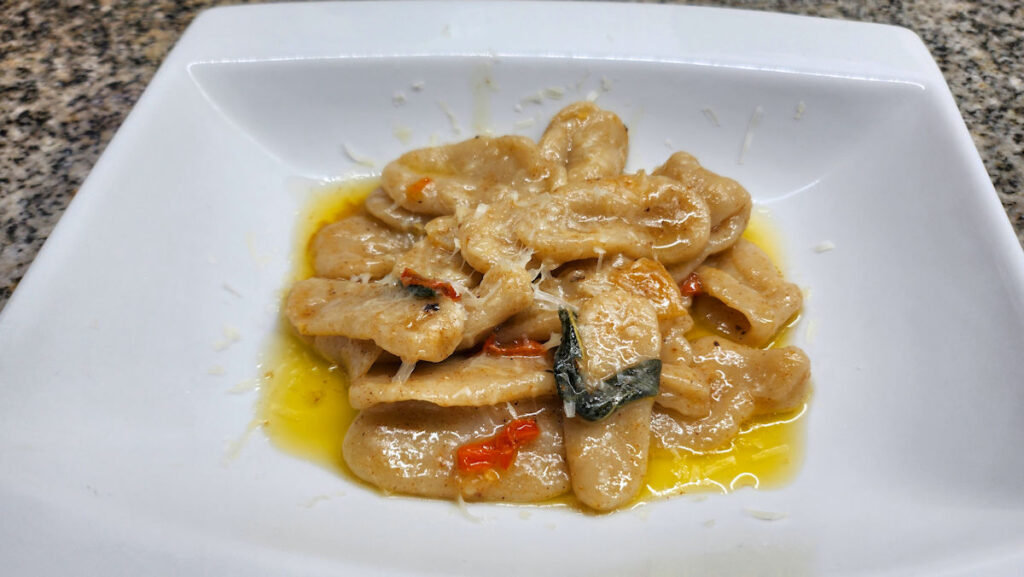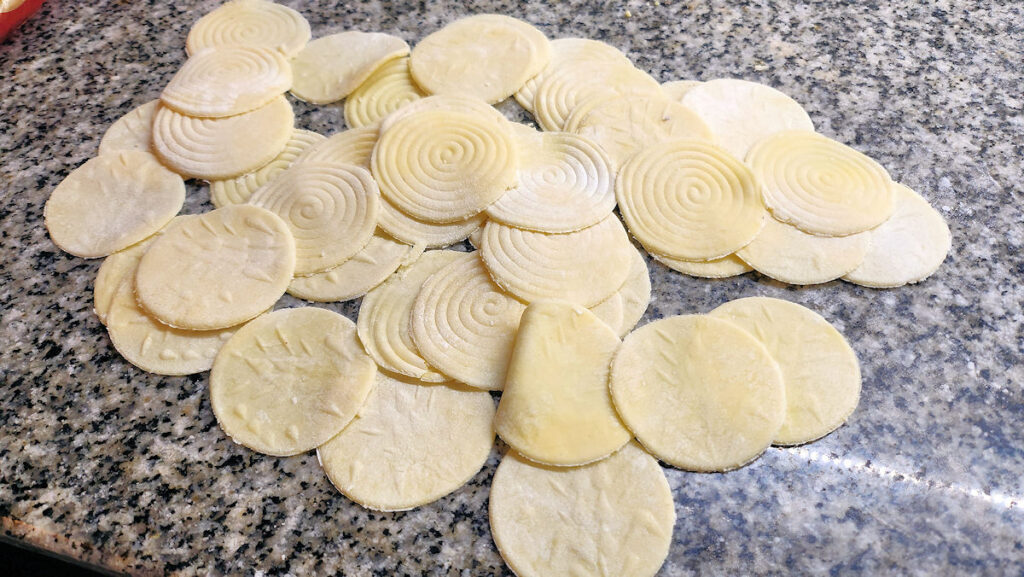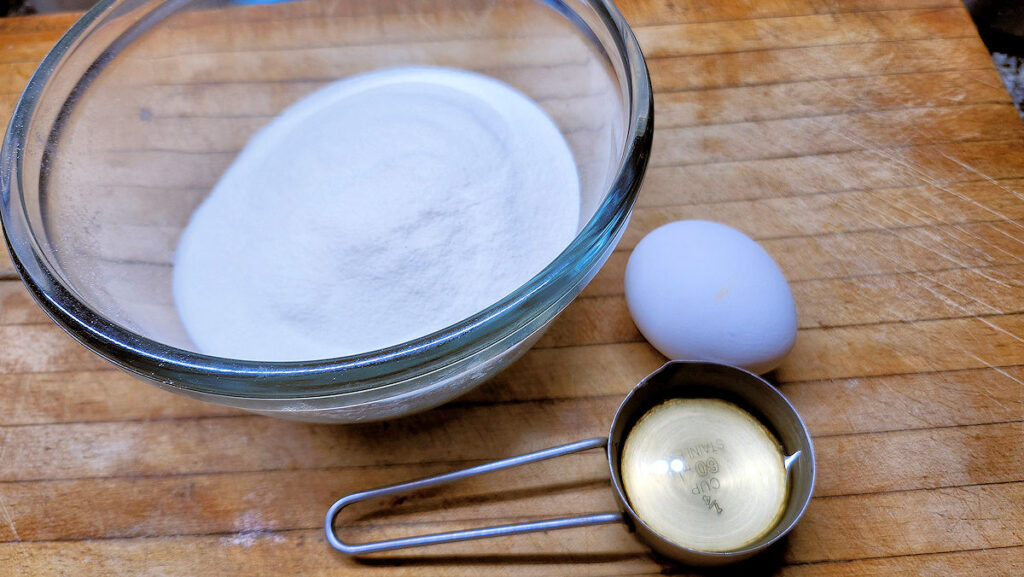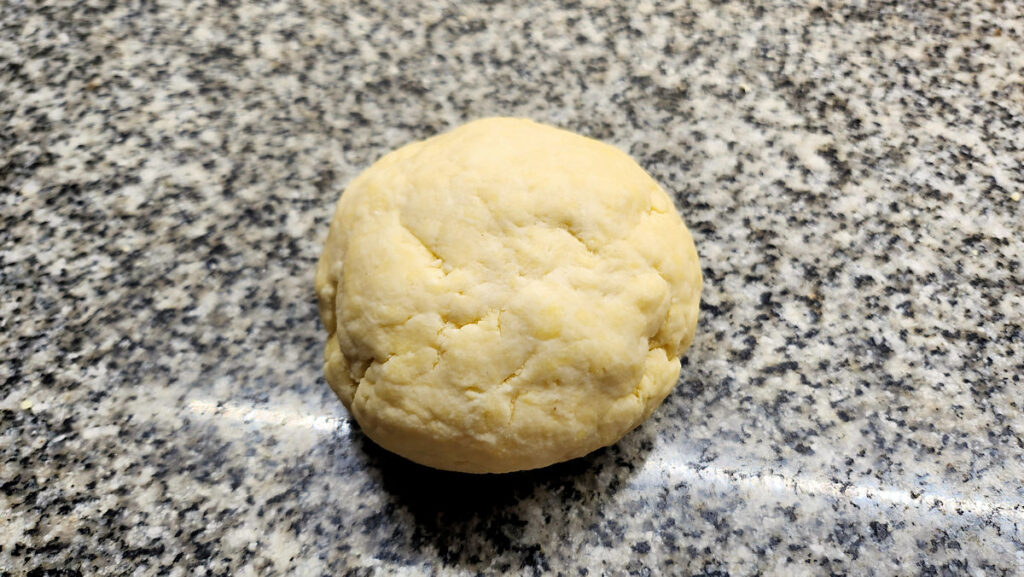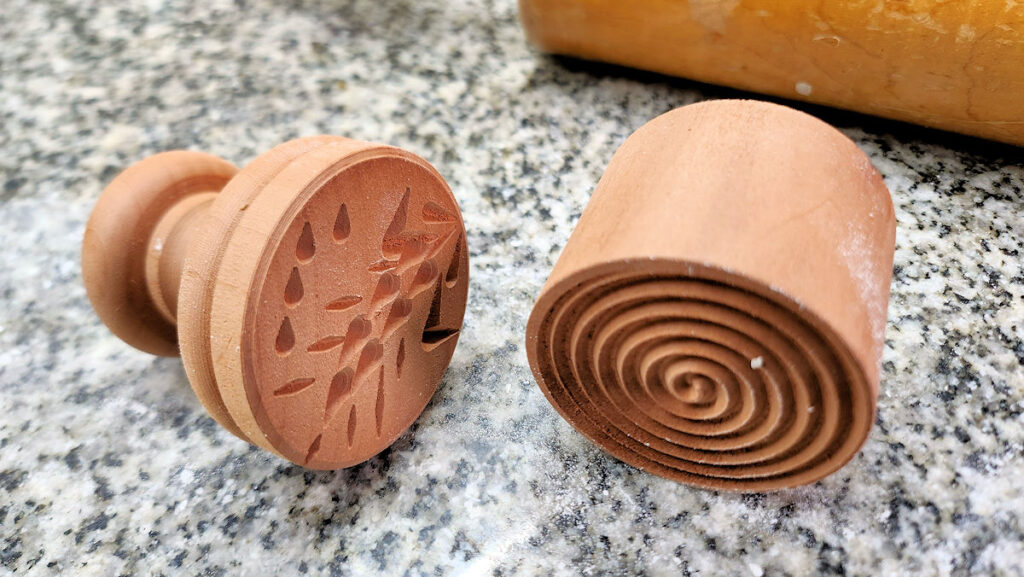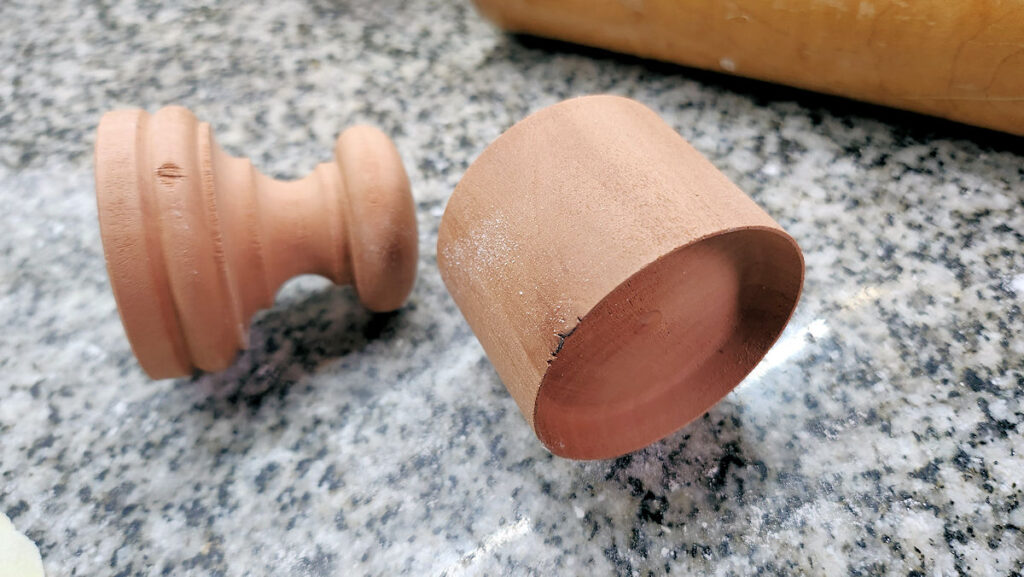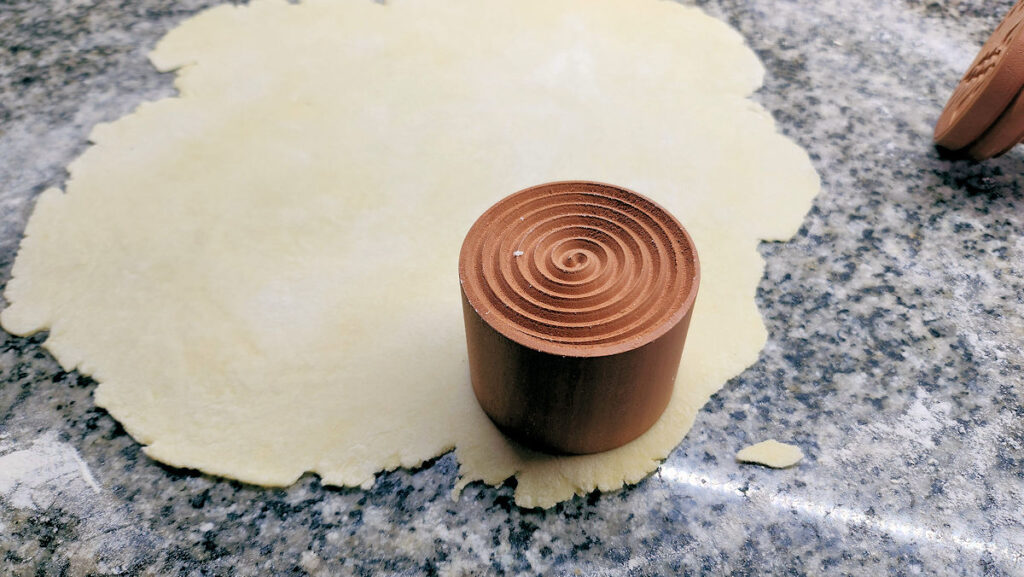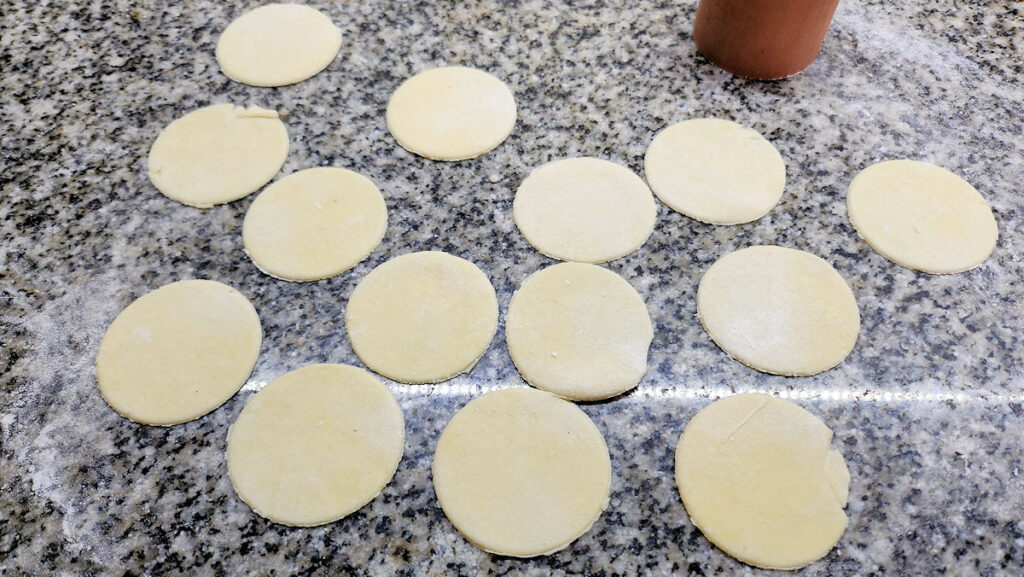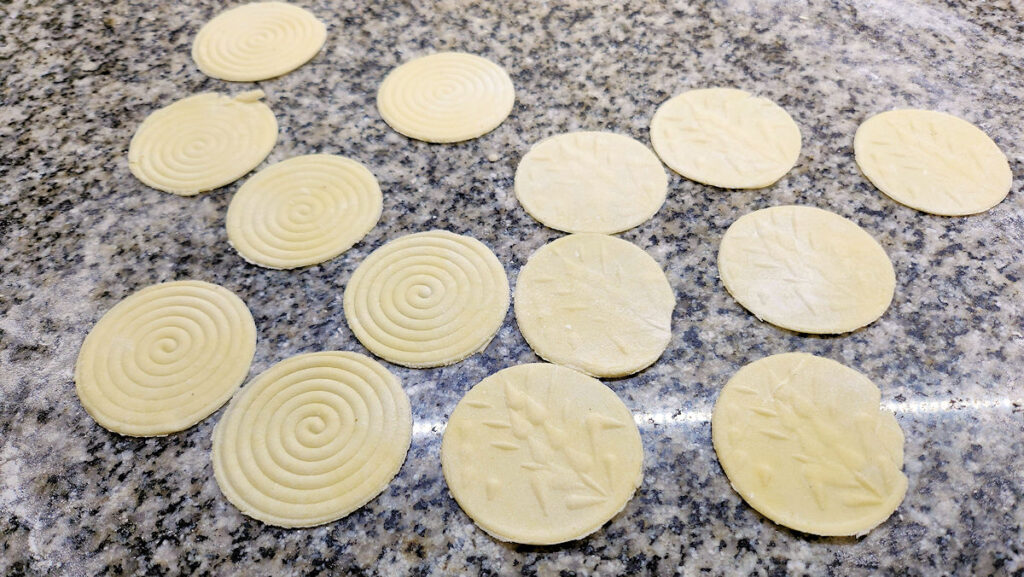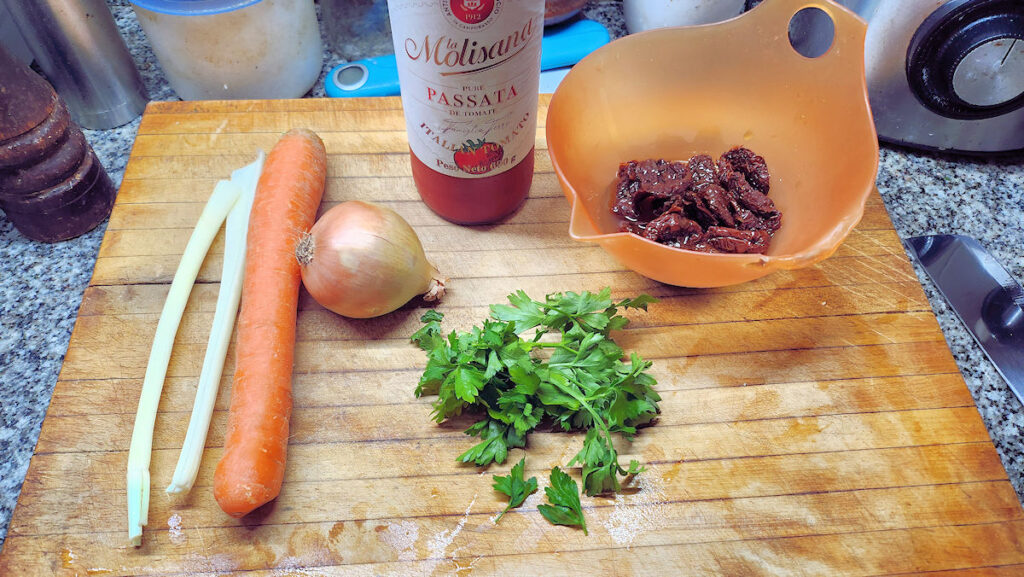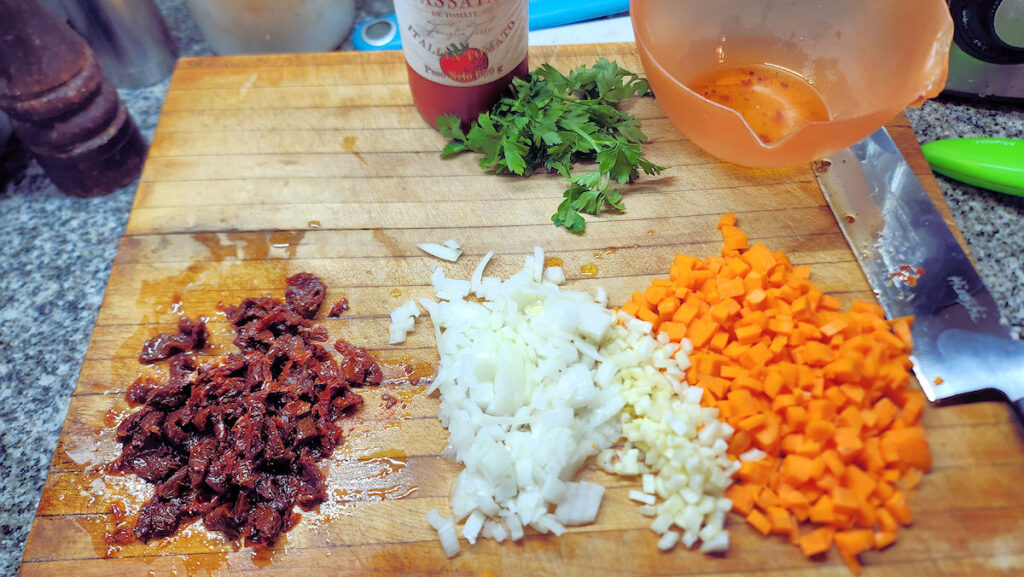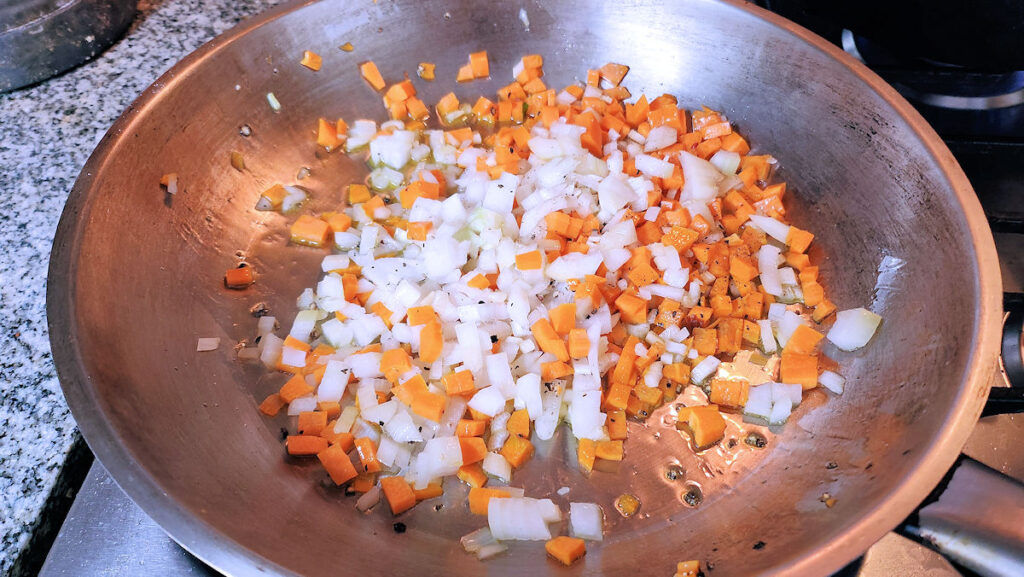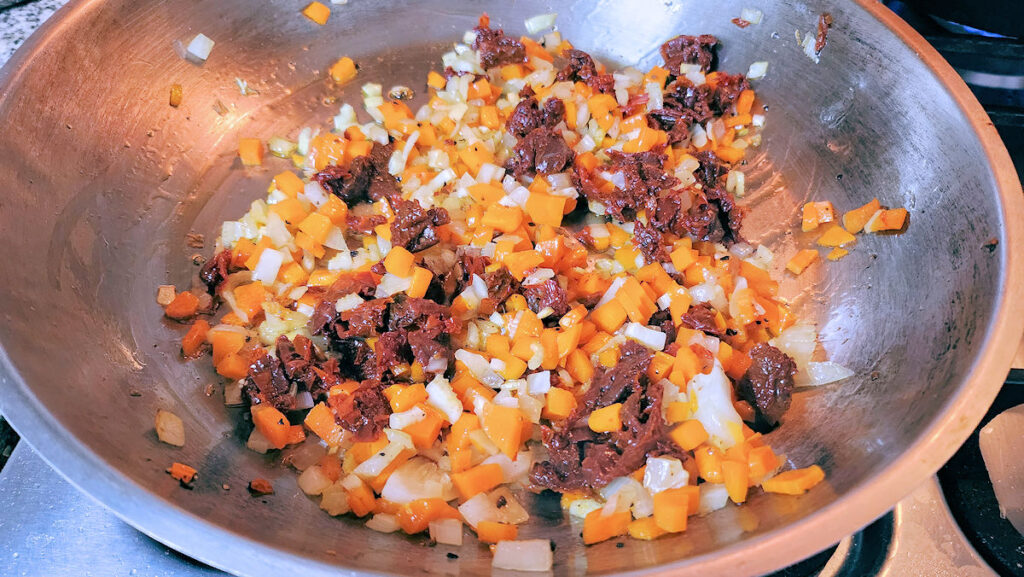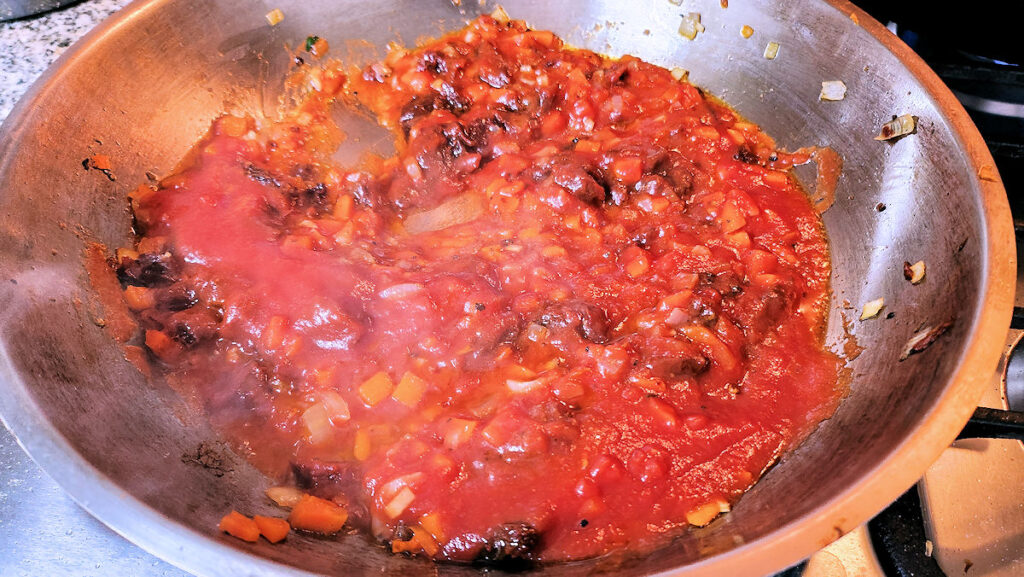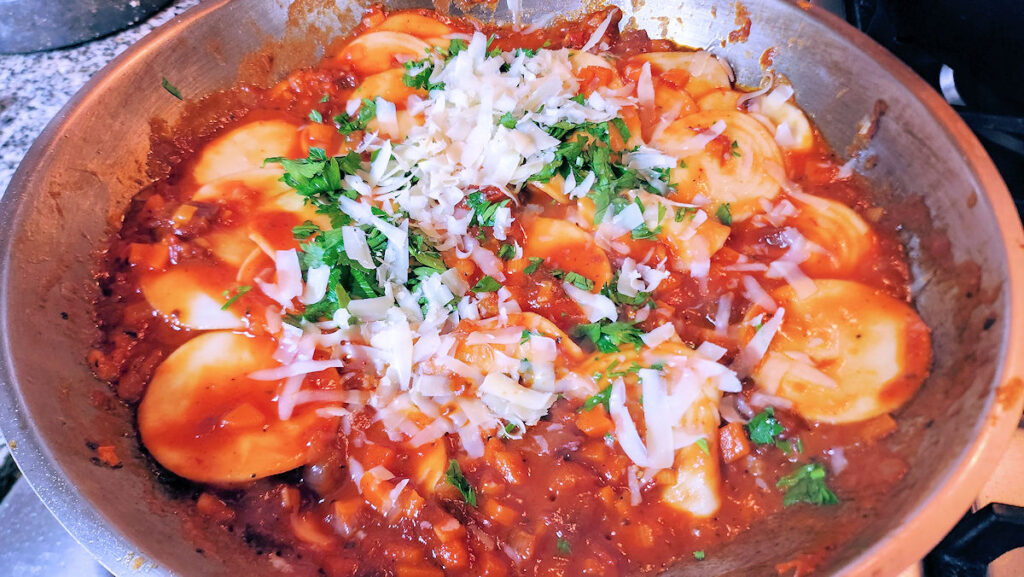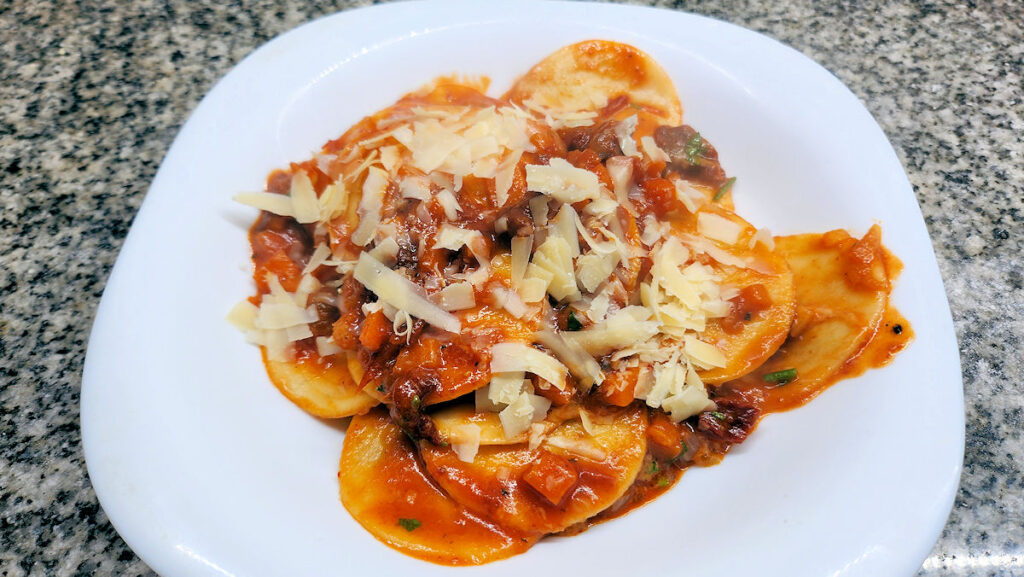Yes, I finally broke down and bought myself a corzetti stamp. I did swear to you I wasn’t going to for a pasta that I don’t generally make. But is that a self-fulfilling dictum, after all, without a corzetti stamp, I can’t make them, so I don’t. But regardless, I didn’t throw away a ton of money, I found someone selling an “almost never used” one online for less than half the price for a new one. So first, a little about the famed Ligurian pasta, corzetti….
There are two types, one of which I’ve visited before, the, more or less, poor folk’s version.
There are somewhat thick and chewy lozenges of pasta dough, often made with less expensive ordinary flour, water, and generally, olive oil, giving them a different look and texture. The lozenges are maybe an inch and a half long and about 3/4 of an inch wide, and they’re pressed with the two thumbs to give a sort of relief image of a figure 8, or an infinity sign. In this version I served them up with butter, sage, chilies, and grated cheese. Simple and delicious!
And then there are the rich people’s corzetti, the pasta of the nobles’ houses. First off, the dough is different – it’s made with wine (not always, but common, and the supposed “real” version of them), and second, they’re delicate discs of decorative pasta meant to mimic the 14th century Genoan gold coin, the corzetto. Let’s get to it!
We have a cup of semolina flour, an egg, and a couple of tablespoons of white wine. If more moisture is needed, a splash more of wine is in order, and I maybe added about a teaspoon more because the dough felt a little too dry after mixing.
Let it rest, as usual, for about 20-30 minutes.
This is the corzetti stamp. One side is the handle and whatever special pattern you’ve commission, or selected – these were often the crest of the particular noble’s house. These days they’re often floral or plant patterns. The other side is the cutter, which also includes a second pattern, usually something very simple like a spiral or concentric circles. The preferred diameter is 4cm, a little over an inch and a half.
Roll out the pasta in batches, fairly thin – you can use a pasta roller too.
Use the cutter to cut out discs. You can re-roll the scraps after letting them sit for a little while to relax again, to not waste the dough.
Then use your stamp or stamps to press the design into the discs.
Traditionally, corzetti are served up with fairly simple, lighter sauces – ranging from butter sauces like the one I showed above (though probably without chilies), to more complex ragús, but generally, vegetable based, which is the direction I’m going with this one.
We have our classic base for a ragú, celery, carrots, and onion. We have some tomato passata, some sun-dried tomatoes in oil (in this case, I had smoked sun-dried tomatoes, adding a nice extra dimension of flavor), and parsley. That’s it other than olive oil, salt, and pepper.
Chop up your veggies, fairly small.
In some olive oil, sauté the base vegetables with some salt and pepper, until soft and the onion turning translucent.
Add the sun-dried tomatoes and cook for a few more minutes.
Add the passata and continue to cook. Maybe five minutes into this I drop my corzetti into boiling salted water to cook. They’re delicate, so they’ll cook in about two minutes, unless you’ve dried them out or are using store-bought dried pasta. I’ll add maybe a ladleful of the pasta water during this time too, just to start emulsifying the sauce and add a touch more salt to it. When it’s nice and thick, and the pasta are ready… adjust the seasoning, and then…
Add the pasta, the parsley, and if you like, some grated cheese – here I used some grana padano, but any good grating cheese like pecorino or parmigiano is fine here. Toss it all together.
And, serve, with more cheese if you like. Delicious! And this sauce works great with, really, any pasta, though I’d tend towards something a little larger, rather than something like spaghetti.

